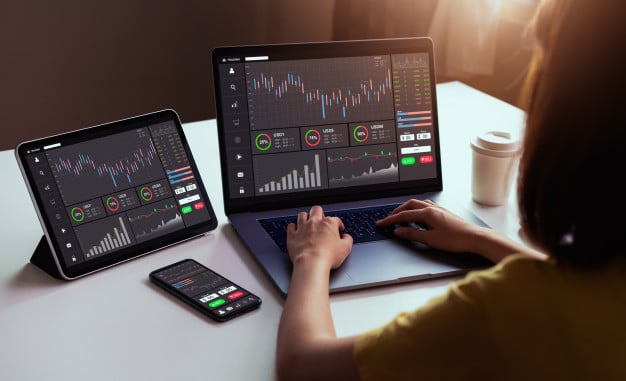
Many beginner traders get confused once they come across the term CFD, which is short for Contract For Difference. CFD might look scary and even sketchy, but we wouldn’t write about it without a good reason. Contracts for difference are great tools if you know how to use them, and strategies connected to them are useful, not that hard and techniques are unique but profitable. In essence, it means that you can profit on the market without owning an asset but benefiting from the price movement itself. This means you don’t have to buy, sell, or invest in a specific stock, which is one of the main differences between CFDs and regular trade.
How does it function?
A CFD contract has to have two parties; both agree they will pay the difference price between opening and closing a chosen asset price on the market. Two sides must be included in a CFD contract, where they agree to pay the fee of the difference between the opening and closing price of a chosen asset on the market. This is called “speculating”, and it involves profit or loss that can be made when the underlying asset switches its opening price position
Pros and Cons
For almost everything you see on the market and sparks interest, you can use CFD trading options
As we said, there aren’t many disadvantages, but you should pay attention that your broker is regulated because the CFD industry isn’t entirely. Once again, be aware of the risks, and since you can gain much but also lose as much, you need to have money (just in case), if you need to cover the “price” of the loss.
CFD Trading Strategies
There are several strategies for trading CFDs, and the most popular is the Breakout strategy and Contrarian CFD strategy. The first one is more suitable for experienced traders since you need to know how to observe different patterns and charts to spot a clear signal. It takes time to learn this. So maybe it’s better to go with the Contrarian strategy if you are a novice. This doesn’t mean it’s easier to predict price movement, but it relies on timing so you can speculate in which direction the price will go.
In Conclusion
As you can tell, CFD trading can be an excellent way to earn a profit if you don’t want to buy an asset. If you’re going to try it out, it would be good to have previous trading experience, so that you don’t go into it completely confused about everything. Otherwise, good luck and we hope you profit from it!
